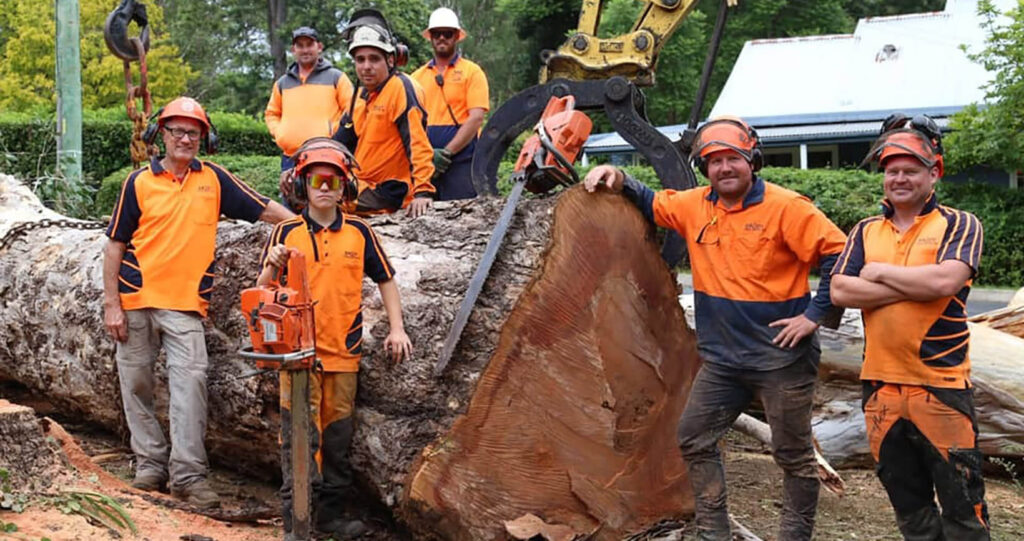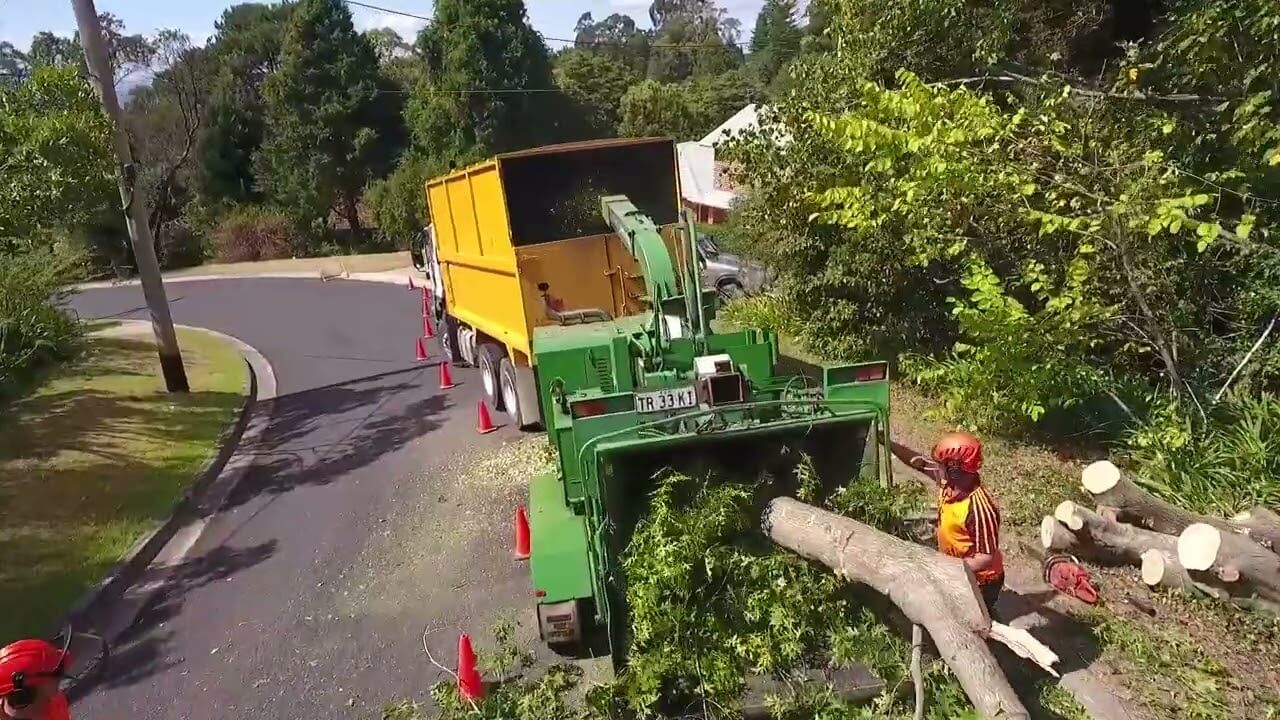The Hills District, located in the greater Sydney area, presents tree removal professionals with a range of unique challenges and opportunities. In order to successfully navigate these challenges and harness the potential opportunities, it is crucial to understand the landscape, flora, topographical conditions, legal frameworks, ethical considerations, and future prospects of tree removal in this region.
Understanding the Hills District Landscape
The Hills District, located in the heart of Sydney, Australia, is a region known for its stunning natural beauty and unique landscape. From rolling hills to picturesque valleys, this area offers a diverse and captivating environment. One of the most fascinating aspects of the Hills District is its rich flora, which includes both native and introduced species.
The Unique Flora of the Hills District
As you explore the Hills District, you will be greeted by a mesmerizing display of flora that showcases the region’s biodiversity. Towering eucalyptus trees stand tall, their branches reaching towards the sky, while vibrant flowering plants add splashes of color to the landscape. The variety of plant species found here is truly remarkable, with each one contributing to the overall beauty and ecological balance of the area. Click here for choosing the right arborist for tree removal in the hills district.
Among the native flora, you will discover iconic Australian plants such as the waratah, a striking red flower that is the state emblem of New South Wales. The delicate flannel flower, with its soft white petals, is another native species that adds a touch of elegance to the Hills District. Additionally, the area is home to a range of introduced species that have thrived in the local climate and become an integral part of the landscape.
However, it is important to approach tree removal hills district with great care and consideration. While there may be circumstances where tree removal is necessary for safety reasons or to make way for development, it is crucial to assess the ecological implications and potential impact on local wildlife.

Topographical Challenges in Tree Removal
Removing trees in the Hills District comes with its own set of challenges due to the unique topography of the area. The hilly terrain, characterized by steep slopes and varying soil conditions, requires specialized equipment and techniques to ensure safety and efficiency during tree removal processes.
Arborists who work in the Hills District must possess a high level of skill and expertise to navigate these topographical challenges. They are trained in utilizing advanced roping systems, cranes, and other tools to overcome the difficulties posed by the landscape. These professionals understand the importance of preserving the natural beauty of the Hills District while ensuring the safety of both people and property.
When faced with a tree removal project in the Hills District, arborists carefully assess the site, taking into consideration factors such as the slope of the land, access points, and soil stability. This thorough evaluation allows them to develop a tailored approach that minimizes any potential risks and ensures the successful removal of trees.
By employing their expertise and utilizing specialized equipment, arborists in the Hills District are able to carry out tree removals in a manner that respects the unique topography and preserves the natural beauty of the area. Their dedication to safety and environmental responsibility ensures that the Hills District continues to thrive as a haven for diverse flora and a cherished landscape for generations to come.
The Process of Tree Removal in Hills District
Tree removal in the Hills District is a meticulous process that requires careful planning and execution. From the initial assessment to the final removal, every step is taken with precision and consideration for safety.
Pre-Removal Assessment and Planning
Prior to any tree removal, a thorough assessment of the site and the tree itself is essential. This assessment involves evaluating various factors to determine the best approach for removal. Arborists consider the health of the tree, its size, structural integrity, and proximity to utility lines or nearby structures. They also take into account the impact of tree removal on neighboring trees and vegetation.
During this phase, arborists may also consult with other professionals, such as landscape architects or environmental specialists, to ensure that the removal process aligns with any regulations or guidelines in place.
Execution and Safety Measures
Once the assessment and planning phase is complete, the actual tree removal process can begin. Arborists employ various techniques to ensure the safe and controlled removal of trees.
One commonly used technique is directional felling, where the tree is carefully cut in a specific direction to avoid any potential damage to surrounding structures or vegetation. Another technique is sectional dismantling, which involves removing the tree in smaller sections, particularly useful when dealing with trees in confined spaces.
Throughout the entire process, safety measures are strictly followed to mitigate risks. Arborists wear personal protective equipment, such as helmets, gloves, and safety glasses, to protect themselves from falling debris and other hazards. They also use specialized equipment, such as ropes and harnesses, to safely access and remove the tree.
Additionally, arborists may implement additional safety measures, such as establishing work zones and using warning signs, to ensure the safety of both the workers and the public during the tree removal process.
Tree removal in the Hills District is not a task to be taken lightly. It requires expertise, careful planning, and adherence to safety protocols. By following these steps, arborists can safely and efficiently remove trees while minimizing any potential risks or damage.
Opportunities in Tree Removal
Tree removal is a multifaceted industry that offers various opportunities for both environmental conservation and economic growth. While it may seem counterintuitive to cut down trees in the name of sustainability, there are instances where tree removal can actually promote environmental benefits and contribute to the overall health of ecosystems.
Environmental Benefits and Sustainability
One of the key reasons for tree removal is to eliminate invasive plant species or diseased trees. Invasive plants can quickly take over an ecosystem, outcompeting native species and disrupting the natural balance. By removing these invasive species, we can prevent their spread and protect the biodiversity of the area.
In addition, removing diseased trees is crucial to prevent the spread of pests or diseases. Certain tree diseases can quickly ravage entire forests if left unchecked. By identifying and removing infected trees, we can stop the spread of these diseases and protect the health of surrounding trees.
Furthermore, the utilization of harvested timber from tree removal in sustainable practices can contribute to the circular economy. Instead of letting the harvested timber go to waste, it can be repurposed for various applications such as woodworking or construction. This not only reduces the demand for new timber but also minimizes the environmental impact associated with logging.
Economic Opportunities in Tree Removal
Tree removal services not only provide environmental benefits but also present significant economic opportunities, especially within the Hills District. The industry creates employment opportunities for local arborists and tree care professionals, contributing to the growth of the local workforce.
Moreover, the materials obtained from tree removal can be used in various industries. Woodworking and construction businesses can benefit from the availability of high-quality timber, which can be transformed into furniture, flooring, or other wooden products. This not only supports local businesses but also reduces the need for importing timber from distant locations.
In addition to employment and material opportunities, tree removal companies play a crucial role in emergency services, such as storm damage cleanup. When severe weather strikes, trees can become hazardous, posing risks to people and property. Tree removal professionals are trained to safely and efficiently remove fallen or damaged trees, ensuring public safety and minimizing further damage.
In conclusion, tree removal offers a range of opportunities that go beyond just cutting down trees. It can contribute to environmental conservation by eliminating invasive species and preventing the spread of diseases. Additionally, it provides economic benefits through job creation, the availability of timber for various industries, and emergency services. By recognizing and embracing these opportunities, we can ensure a sustainable and thriving future for both our environment and local communities.
Legal and Ethical Considerations
Understanding Local Regulations
Compliance with local regulations is imperative when undertaking tree removal projects. The Hills District might have specific bylaws or permits that need to be followed. This includes obtaining permission for tree removal, adhering to size and species restrictions, and ensuring proper disposal of debris. Violations can result in legal consequences and damage to reputation.
When considering tree removal in the Hills District, it is essential to familiarize oneself with the local regulations governing such projects. These regulations are put in place to protect the environment, maintain the aesthetic appeal of the community, and ensure the safety of residents. By understanding and adhering to these regulations, tree removal professionals can avoid legal complications and maintain a positive reputation within the community.
One specific regulation that might be in place is the requirement to obtain permission for tree removal. This means that before any trees can be removed, individuals or companies must seek approval from the relevant authorities. This process typically involves submitting an application, providing details about the trees to be removed, and explaining the reasons for their removal. By obtaining the necessary permits, tree removal professionals can demonstrate their commitment to following the law and operating within the boundaries set by the local government.
In addition to obtaining permission, size and species restrictions may also apply. These restrictions are designed to protect certain types of trees or trees of a certain size that are considered important for the local ecosystem or community. By adhering to these restrictions, tree removal professionals can ensure that the natural balance is maintained and that the community continues to benefit from the presence of diverse tree species.
Proper disposal of debris is another crucial aspect of complying with local regulations. Tree removal projects often generate a significant amount of waste, including branches, leaves, and trunks. It is important to dispose of this debris in an environmentally responsible manner, such as through recycling or composting. By doing so, tree removal professionals can minimize the impact on the environment and contribute to sustainable waste management practices.

Ethical Implications of Tree Removal
Tree removal should not be taken lightly, as it raises ethical considerations. The impact on the ecosystem, loss of habitat for wildlife, and the aesthetic value of trees in the community all need to be carefully evaluated. Balancing the need for tree removal with environmental consciousness and community values is crucial for ethical decision-making.
When contemplating tree removal, it is important to consider the broader implications beyond the immediate need for removal. Trees play a vital role in the ecosystem, providing oxygen, absorbing carbon dioxide, and supporting biodiversity. Removing trees can disrupt this delicate balance and have far-reaching consequences for the environment. It is essential to assess the ecological impact of tree removal and explore alternative solutions, such as tree preservation or relocation, whenever possible.
Furthermore, trees serve as habitats for various wildlife species, including birds, squirrels, and insects. Removing trees can result in the loss of these habitats, potentially leading to a decline in local wildlife populations. This loss of habitat can disrupt the natural food chain and have cascading effects on the entire ecosystem. Considering the ethical implications of tree removal involves weighing the immediate needs against the long-term impact on wildlife and biodiversity.
In addition to their ecological importance, trees also contribute to the aesthetic value of a community. They provide shade, enhance the visual appeal of neighborhoods, and create a sense of tranquility. Removing trees without careful consideration of their aesthetic value can negatively impact the overall ambiance of an area. Ethical decision-making in tree removal involves engaging with the community, understanding their values, and finding a balance between the need for removal and preserving the beauty of the surroundings.
Ultimately, navigating the legal and ethical considerations of tree removal requires a comprehensive understanding of local regulations, a commitment to environmental consciousness, and a willingness to engage with the community. By approaching tree removal projects with diligence and sensitivity, professionals can ensure that their actions align with both the law and the values of the community they serve.
Future of Tree Removal in Hills District
Technological Advancements in Tree Removal
The future of tree removal in the Hills District is shaped by advancing technology. Innovative tools and equipment, such as drones for assessing tree health or remote-controlled machinery for precise pruning, are being developed. These advancements not only improve efficiency but also minimize risks and enhance sustainable practices within the industry.
Strategies for Sustainable Tree Management
As society becomes increasingly conscious of environmental conservation, the focus on sustainable tree management grows. Employing strategies like tree preservation, selective pruning, and planting native tree species can promote biodiversity and mitigate the need for extensive tree removal. Collaboration between arborists, local authorities, and community organizations is vital for devising effective sustainable tree management plans.
By understanding the distinct features and challenges of the Hills District landscape, navigating the process of tree removal, capitalizing on the opportunities it presents, and being mindful of legal, ethical, and future considerations, tree removal professionals can successfully maneuver through these unique circumstances. By doing so, they contribute to the preservation and restoration of the Hills District’s natural beauty while ensuring the safety and well-being of its residents.
